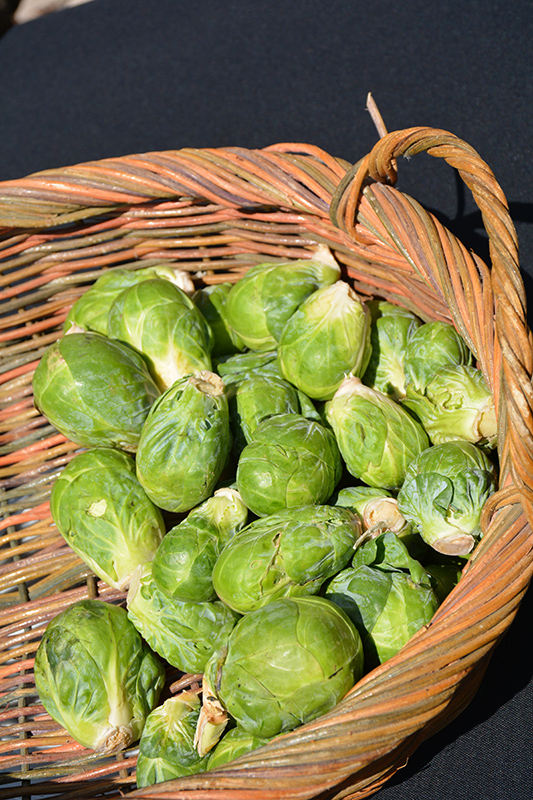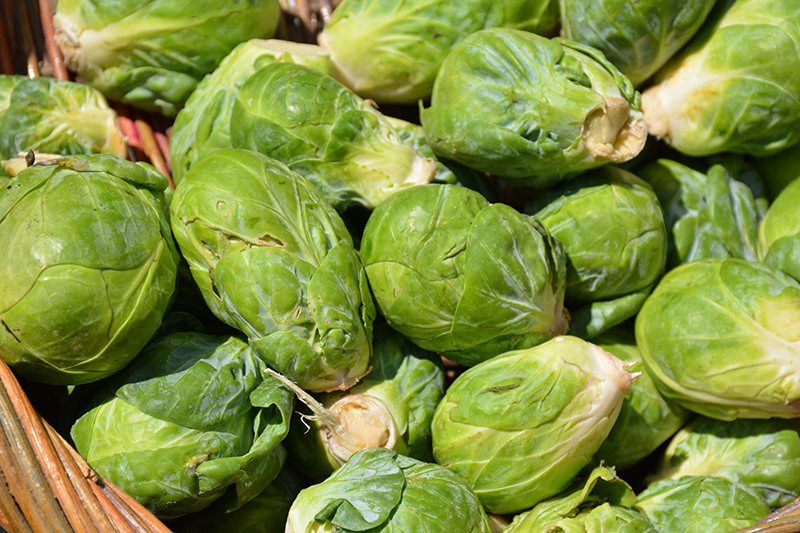Jade Cross Brussels Sprout - New For 2024! Brassica oleracea var. gemmifera 'Jade Cross' Height: 28 inches Spacing: 24 inches
Sunlight:
Hardiness Zone: (annual) Description: A lovely compact, early maturing variety that produces self supporting stems full of delicious sprouts; high yields of small, sweet and crunchy sprouts, perfect for sautéing, baking, or try them roasted along with bacon Edible Qualities Jade Cross Brussels Sprout is an annual vegetable plant that is typically grown for its edible qualities. The small round dark green tightly-wrapped heads of foliage are usually harvested from early to late fall. The heads have a sweet taste and a crunchy texture. The heads are most often used in the following ways: Planting & Growing Jade Cross Brussels Sprout will grow to be about 28 inches tall at maturity, with a spread of 18 inches. When planted in rows, individual plants should be spaced approximately 24 inches apart. This fast-growing vegetable plant is an annual, which means that it will grow for one season in your garden and then die after producing a crop. This plant is typically grown in a designated vegetable garden. It should only be grown in full sunlight. It does best in average conditions that are neither too wet nor too dry, and is very intolerant of standing water. It is not particular as to soil pH, but grows best in rich soils. It is somewhat tolerant of urban pollution. Consider applying a thick mulch around the root zone over the growing season to conserve soil moisture. This is a selected variety of a species not originally from North America.![]()
![]()
![]()
![]()
![]()
![]()
![]()
Characteristics
Applications
Ornamental Features
This guide is an online resource representing many of the varieties that we carry over the course of the season, and is intended for informational purposes only. Inventory varies seasonally, so we cannot guarantee that every plant will be in stock at all times - please contact the store directly for current availability. It does not include our entire selection of plants, so be sure to visit our store to see varieties that may not be represented on this list.



